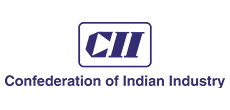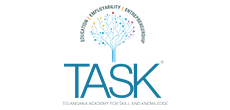Our top Employers!












What we offer?
Unlimited Job Postings
Effortlessly fill numerous job vacancies within your organization & generate job listings to attract potential candidates & increase visibility.
Diverse Talent Acquisition
Source skilled professionals from consultancy agencies and educational institutions and recruit fresh graduates from a variety of colleges and universities.
Recruitment Process Monitoring
Monitor the progress of applicants from selection to onboarding and oversee recruitment, from hiring procedures to the integration of new hires into the company.
See How It Works
1. Join the platform and invite your team.
2. Upload your available talents.
3. Swipe right to share applicant profiles.
4. Receive offer letters and get your applicants hired.
Our Partners












Key Features
Swipe right to hire
Swipe right to save an applicant’s profile, left otherwise.Two-Level Matching
Get relevant matches based on the applicant's profile, as well as their interest in joining your company.In-App Messenger
Instantly chat real-time with the matched applicants and get to know more about their experience.Post free Jobs
Post unlimited jobs for free of cost. Sign up today and start hiring.Hire on the-go
Hire top talent curated by our AI engine using our mobile app or web dashboard.Schedule Interviews
Schedule interviews on the app and track the entire recruitment process, all in one place.Get Matching Score
Find applicants perfectly matching to your jobs and get match score to determine a fit between the applicant and job.Share Offer Letters
Share offer letters to the selected applicants within the platform.Team Collaboration
Collaborate with your team members and make hiring more efficient and faster.Our Platforms
Resume Builder
Workruit Resume Builder is simplifying the online resume-building experience for you. Leverage the industry's first personalized URL feature.Job Search
Finding a role that defines your passion doesn’t need to be a nightmare. With Workruit, all you have to do is "swipe right".Skilleasy
With our assessment module, you can upskill yourselves with the help of various skill development courses and capture the best career opportunities.SPECIALITIES
Chief Information Officer
Back-end Developer
Blockchain Developer
CTO
Database Administrator
DevOps
Full Stack Developer
IoT Developer
IT Consultant
IT Security
Machine Learning Engineer
Mean Stack Developer
Network Engineer
QA Engineer
Software Engineer
Technical Architect
Technical Lead
Web Developer
Android Developer
Cross Platform Developer
iOS Developer
Business Analyst
Business Development
CEO
Project Manager
General Business
Venture Capital
Product Managerr
Architect
CPO
Creative Director
Fashion Designer
Game Designer
Interior Designer
UI/UX Designer
Visual Designer
Data Scientist
Data Analytics
CFO
Chartered Accountant
Finance/Accounting
Financial Analyst
CMO
Advertising
Community Manager
Content Writer
Copywriter
Digital Marketing
Growth Hacker
Marketing
Public Relations
SEO/SEM Analyst
Social Media Manager
CHRO
Human Resources
Payroll
Recruiter
Talent Acquisition
QA Engineer
Network Engineer
Sales
Client Servicing
Key Account Management
Sales
What Customers Say About Us
Get inspired by the most-hired resumes in world-leading companies like Swiggy, Paytm, Byju’s.

Frequently Asked Questions
What are recruiter tools and why are they important?
How do recruiter tools help streamline the hiring process?
What features should I look for in a recruiter tool?
Can recruiter tools help me find top talents more efficiently?
Are there any free recruiter tools available?
How do I integrate recruiter tools with my existing hiring process?
Recruitment Tools and Insights for Recruiters
Detailed description of the various tools available exclusively for recruiters
At Workruit Resume Builder, we provide a comprehensive suite of recruitment tools designed to simplify and expedite the hiring process. From candidate tracking to interview scheduling, our platform offers everything you need to efficiently manage recruitment tasks.
Explanation of how these tools aid recruiters in talent identification and recruitment
Our tools are meticulously crafted to aid recruiters in every step of the talent identification and recruitment journey. With intuitive features and seamless integration, you can effortlessly navigate through the process, saving time and resources while ensuring the best possible outcomes.
Examples of insights provided by the platform to streamline the recruitment process
Gain valuable insights into your recruitment efforts with our platform. From candidate engagement metrics to performance analytics, our comprehensive insights provide actionable data to optimize your recruitment strategies and achieve better results.
Job Posting for Recruiters
Explanation of the job posting feature tailored for recruiters
Easily post job openings tailored to your organization's needs with our user-friendly job posting feature. From entry-level positions to executive roles, our platform ensures maximum visibility and reach to suitable candidates.
Steps for recruiters to post job openings on the platform
Posting a job opening is quick and straightforward with Workruit Resume Builder. Simply follow our intuitive interface, input the necessary details, and publish your job listing in minutes.
Highlight the visibility and reach of job postings to suitable candidates
Our platform leverages advanced algorithms to match job postings with suitable candidates, ensuring maximum visibility and reach. Reach qualified candidates efficiently and effectively with Workruit Resume Builder.
Access to Student Data for Recruiters
Description of the database of student profiles available exclusively for recruiters
Gain access to a vast database of student profiles exclusively curated for recruiters. Our platform provides comprehensive information on students from various backgrounds and disciplines, allowing you to find the perfect match for your organization.
Information on the criteria used to match recruiters with suitable students
Our platform utilizes advanced matching algorithms to connect recruiters with suitable students based on specific criteria such as skills, qualifications, and experience. Find the perfect candidate for your internship or entry-level positions with ease.
Benefits of accessing student data for targeted recruitment efforts
Accessing student data allows recruiters to tailor their recruitment efforts and target candidates more effectively. Whether you're looking for interns, fresh graduates, or experienced professionals, our platform ensures you find the right fit for your organization..
Tracking Interest in Job Postings for Recruiters
Overview of the feature to track candidate interest in job postings specifically for recruiters
Track candidate interest in your job postings with our intuitive tracking feature. Monitor engagement metrics and gauge candidate interest to optimize your recruitment strategies.
Explanation of how recruiters can gauge candidate engagement
Our platform provides real-time analytics on candidate engagement, allowing recruiters to gauge interest levels and adjust their approach accordingly. Identify high-potential candidates and nurture relationships for future opportunities.
Importance of tracking interest for optimizing recruitment strategies
Tracking candidate interest is crucial for optimizing recruitment strategies and ensuring a successful hiring process. With our platform, recruiters can make data-driven decisions and maximize their recruitment efforts.
Resume and CV Management for Recruiters
Tools and features related to managing resumes and CVs on the platform
Efficiently manage resumes and CVs with our dedicated management tools. From organizing and categorizing candidate profiles to conducting comprehensive assessments, our platform streamlines the entire process.
How recruiters can efficiently review and assess candidate resumes and CVs
Our platform provides recruiters with the tools they need to review and assess candidate resumes and CVs efficiently. With customizable options and intuitive features, recruiters can quickly identify top talent and make informed decisions.
Customizable options for organizing and categorizing resumes and CVs for easy reference
Organize and categorize candidate profiles according to your preferences with our customizable options. Whether you're sorting by skills, experience, or qualifications, our platform ensures easy reference and retrieval of candidate information.
Evaluation Tools for Recruiters
Description of tools provided for evaluating assignments or candidate submissions exclusively for recruiters
Evaluate assignments and candidate submissions with ease using our dedicated evaluation tools. From standardized criteria to customizable options, our platform simplifies the assessment process for recruiters.
Benefits of using these tools for efficient candidate assessment
Our evaluation tools are designed to streamline the candidate assessment process, saving recruiters time and resources. With automated scoring and feedback mechanisms, recruiters can identify top candidates quickly and efficiently.
Examples of assessment criteria and customizable evaluation options
Tailor your assessment criteria to suit your organization's needs with our customizable options. Whether you're evaluating technical skills, communication abilities, or cultural fit, our platform ensures fair and consistent assessments.
Interview Scheduling and Conducting for Recruiters
Explanation of the platform's capabilities for scheduling interviews tailored for recruiters
Scheduling interviews has never been easier with our intuitive scheduling feature. Seamlessly coordinate interview timings and manage multiple interview sessions effortlessly with Workruit Resume Builder.
Features for conducting interviews directly on the platform
Conduct interviews directly on our platform with our integrated video interviewing feature. From initial screenings to final rounds, our platform provides all the tools you need to conduct interviews efficiently and effectively.
Benefits of centralized interview management for recruiters
Centralized interview management streamlines the entire interview process, allowing recruiters to focus on finding the best candidates for their organization. With Workruit Resume Builder, you can manage interviews seamlessly and ensure a positive candidate experience.
Customer Support and Assistance for Recruiters
Information on available customer support channels tailored for recruiters
Our dedicated customer support team is available to assist recruiters with any queries or issues they may encounter. Whether you need technical assistance or guidance on using our platform effectively, we're here to help.
Assistance provided to recruiters for using the platform effectively
We understand the importance of providing comprehensive support to our recruiters. That's why our customer support team is committed to assisting recruiters every step of the way, ensuring a smooth and hassle-free experience with our platform.
Contact details for further inquiries or assistance
For further inquiries or assistance, please don't hesitate to contact our customer support team at (mention email) or (backlink of the support page).
Schedule a Demo
Transform your hiring process with Workruit. Schedule a demo call today and connect with top talent faster than ever before.












